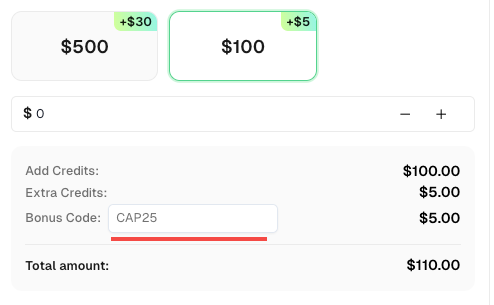What is AWS WAF: A Python Web Scraper's Guide to Seamless Data Extraction

Lucas Mitchell
Automation Engineer
19-Sep-2025
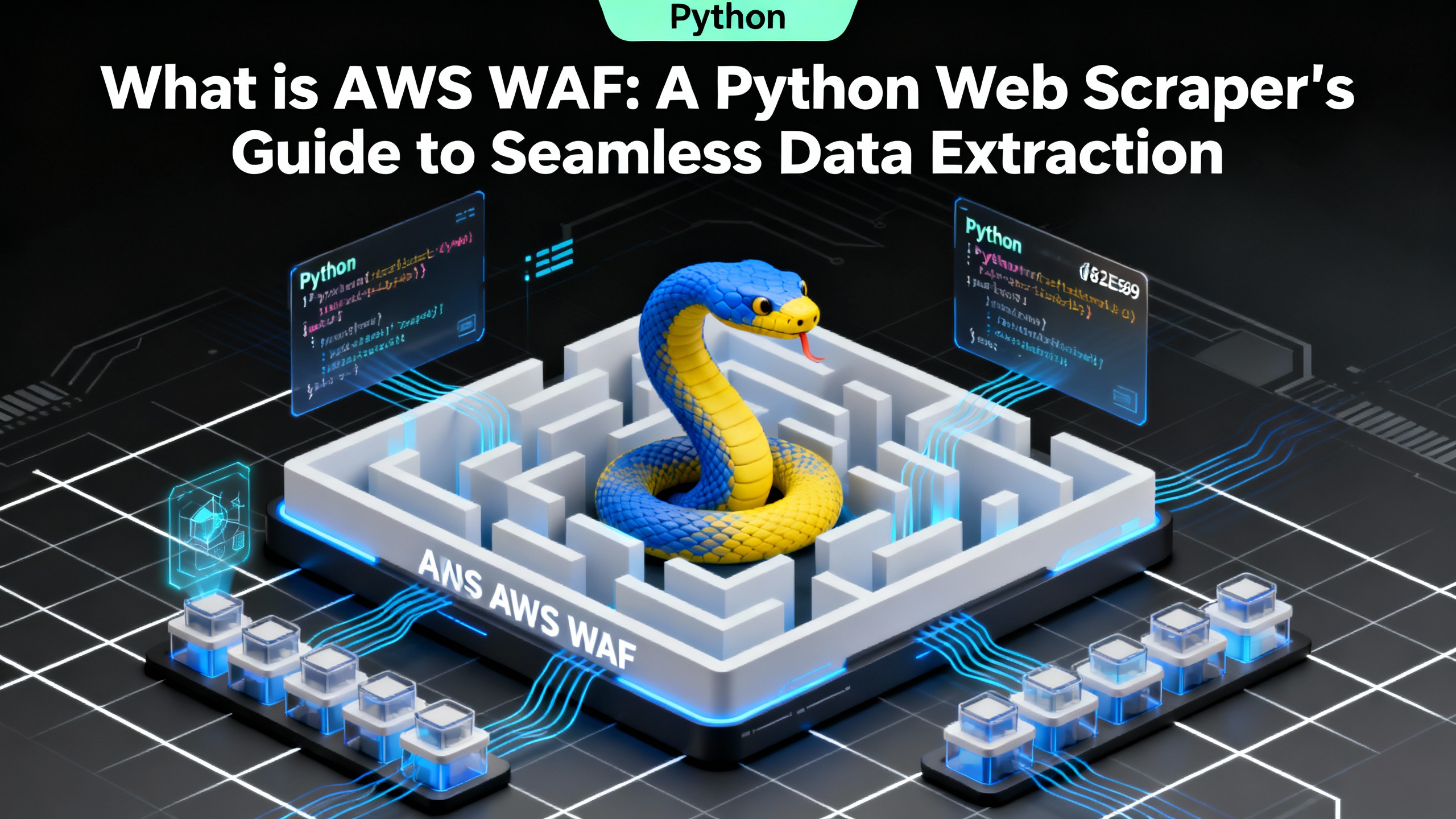
Web scraping, an essential process for gathering vast amounts of data, frequently encounters sophisticated defenses like AWS Web Application Firewall (WAF) Bot Control. These systems are designed to differentiate between legitimate human users and automated bots, posing significant hurdles for developers and data scientists. While traditional web scraping tools often struggle to interact with these dynamic and interactive challenges, leading to blocked requests and incomplete data extraction, a proactive approach is key to successfully solving AWS WAF challenges when web scraping.
This article delves into the intricacies of AWS WAF, exploring its mechanisms and the challenges it presents for web scrapers. Crucially, we will provide a detailed, actionable solution leveraging Python and CapSolver to overcome these obstacles. By the end of this guide, you will understand how to effectively bypass AWS WAF, ensuring your web scraping operations remain robust and efficient. We highly recommend utilizing CapSolver for its advanced AI-powered capabilities, which streamline the process of solving complex CAPTCHAs and other WAF challenges, ensuring uninterrupted data streams for your projects.
What is AWS WAF and Its Challenges
AWS WAF (Web Application Firewall) is a crucial security service provided by Amazon Web Services that helps protect web applications from common web exploits and bots. It acts as a shield, filtering and monitoring HTTP and HTTPS requests that reach your web applications. While essential for security, AWS WAF presents significant hurdles for legitimate web scraping operations, often misidentifying scrapers as malicious bots.
Challenges for Web Scrapers
For web scrapers, AWS WAF's protective measures translate into several significant challenges:
- CAPTCHA Challenges: When AWS WAF suspects bot activity, it often presents CAPTCHAs (Completely Automated Public Turing test to tell Computers and Humans Apart). These visual or interactive puzzles are designed to be easy for humans but difficult for automated scripts. Solving AWS WAF CAPTCHAs manually is impractical for large-scale scraping, and traditional automated methods often fail against their evolving complexity.
- IP Blocking and Rate Limiting: Sending too many requests from a single IP address or exceeding a predefined request rate can lead to temporary or permanent IP blocks. AWS WAF employs adaptive rate limiting, IP reputation scoring, and session-based limits, making simple IP rotation insufficient.
- Dynamic Request Validation: AWS WAF ensures that requests resemble those from real users. This involves validating HTTP headers (User-Agent, Accept, Referer), managing cookies, and requiring dynamic tokens (like CSRF tokens) to be included in subsequent requests. Failing to manage these elements correctly results in blocked requests.
- Evolving Detection Mechanisms: AWS WAF's continuous updates and machine learning capabilities mean that bypass techniques can quickly become obsolete. Scrapers must constantly adapt to new detection methods, requiring ongoing maintenance and development.
Overcoming these challenges is paramount for any successful web scraping operation targeting AWS WAF-protected sites. The key lies in adopting advanced strategies and leveraging specialized tools that can mimic human behavior and solve complex CAPTCHAs efficiently. This is where solutions like CapSolver become invaluable, an indispensable tool for navigating the complexities of AWS WAF.
CapSolver Bonus Code
Don’t miss the chance to further optimize your operations! Use the bonus code CAP25 when topping up your CapSolver account and receive an extra 5% bonus on each recharge, with no limits. Visit the CapSolver Dashboard
Solving AWS WAF with Python and CapSolver
While AWS WAF presents formidable challenges, they are not insurmountable. By combining Python with a powerful CAPTCHA-solving service like CapSolver, you can effectively bypass these security measures and continue your web scraping tasks. CapSolver offers two primary methods for tackling AWS WAF: a token-based solution and a recognition-based solution.
The CapSolver Advantage
Before diving into the technical implementation, it's important to understand why CapSolver is the recommended solution. CapSolver provides a robust and reliable service specifically designed to handle various CAPTCHA types, including those deployed by AWS WAF. Its key benefits include:
- High Accuracy: CapSolver's advanced AI and machine learning models ensure a high success rate in solving complex CAPTCHAs.
- Scalability: The service is built to handle a large volume of requests, making it suitable for large-scale web scraping operations.
- Ease of Integration: CapSolver offers a straightforward API that can be easily integrated into your Python scripts.
- Cost-Effectiveness: Compared to the resources required to build and maintain a custom solution, CapSolver is a more economical choice.
Solution 1: Token-Based AWS WAF Solving
The token-based approach is the most efficient method for bypassing AWS WAF. It involves obtaining a valid aws-waf-token cookie from CapSolver, which you can then use in your subsequent requests to the target website. This method is ideal for scenarios where the website presents a CAPTCHA challenge that requires a token for verification.
How It Works
- Encounter the WAF: Your scraper sends a request to the target website and is met with an AWS WAF challenge.
- Extract Parameters: You extract the necessary parameters from the challenge page, including
awsKey,awsIv,awsContext, andawsChallengeJS. - Create a Task with CapSolver: You send these parameters to the CapSolver API, creating a task of type
AntiAwsWafTaskorAntiAwsWafTaskProxyLess. - Retrieve the Solution: CapSolver processes the task and returns a solution containing the
aws-waf-tokencookie. - Bypass the WAF: You include this cookie in your subsequent requests to the website, effectively bypassing the WAF.
Python Implementation
Here is a Python script demonstrating how to use CapSolver's token-based solution:
python
import requests
import time
# Your CapSolver API Key
CAPSOLVER_API_KEY = "YOUR_CAPSOLVER_API_KEY"
CAPSOLVER_CREATE_TASK_ENDPOINT = "https://api.capsolver.com/createTask"
CAPSOLVER_GET_TASK_RESULT_ENDPOINT = "https://api.capsolver.com/getTaskResult"
# The URL of the website protected by AWS WAF
WEBSITE_URL = "https://your-target-website.com" # Replace with your target URL
def solve_aws_waf_token(website_url, capsolver_api_key):
# --- Step 1: Initial request to get WAF parameters ---
# This part of the code needs to be adapted to how the target website
# presents the WAF challenge and where the parameters are located.
# The following is a generalized example.
# It's recommended to use a session object to maintain cookies
session = requests.Session()
response = session.get(website_url)
# Extract awsKey, awsIv, awsContext, awsChallengeJS from the response.text
# This often requires parsing the HTML or JavaScript of the page.
# The exact method will vary depending on the website.
# For this example, we'll use placeholder values.
aws_key = "EXTRACTED_AWS_KEY"
aws_iv = "EXTRACTED_AWS_IV"
aws_context = "EXTRACTED_AWS_CONTEXT"
aws_challenge_js = "EXTRACTED_AWS_CHALLENGE_JS"
# --- Step 2: Create a task with CapSolver ---
task_payload = {
"clientKey": capsolver_api_key,
"task": {
"type": "AntiAwsWafTaskProxyLess",
"websiteURL": website_url,
"awsKey": aws_key,
"awsIv": aws_iv,
"awsContext": aws_context,
"awsChallengeJS": aws_challenge_js
}
}
create_task_response = requests.post(CAPSOLVER_CREATE_TASK_ENDPOINT, json=task_payload).json()
task_id = create_task_response.get('taskId')
if not task_id:
print(f"Error creating CapSolver task: {create_task_response.get('errorDescription')}")
return None
print(f"CapSolver task created with ID: {task_id}")
# --- Step 3: Poll for the task result ---
while True:
time.sleep(5)
get_result_payload = {"clientKey": capsolver_api_key, "taskId": task_id}
get_result_response = requests.post(CAPSOLVER_GET_TASK_RESULT_ENDPOINT, json=get_result_payload).json()
if get_result_response.get('status') == 'ready':
aws_waf_token_cookie = get_result_response['solution']['cookie']
print("CapSolver successfully solved the CAPTCHA.")
return aws_waf_token_cookie
elif get_result_response.get('status') == 'failed':
print(f"CapSolver task failed: {get_result_response.get('errorDescription')}")
return None
# --- Step 4: Use the token in subsequent requests ---
if __name__ == "__main__":
aws_waf_token = solve_aws_waf_token(WEBSITE_URL, CAPSOLVER_API_KEY)
if aws_waf_token:
print(f"Received AWS WAF Token: {aws_waf_token}")
# Use the token in your subsequent requests
headers = {
'Cookie': aws_waf_token
}
final_response = requests.get(WEBSITE_URL, headers=headers)
print("Successfully accessed the website:")
print(final_response.text)Solution 2: Recognition-Based AWS WAF Solving
In some cases, AWS WAF may present an image-based CAPTCHA that requires you to identify objects within an image. For these scenarios, CapSolver's recognition-based solution is the answer. This method involves sending the CAPTCHA image to CapSolver for analysis and receiving the coordinates or indices of the correct objects in return.
How It Works
- Capture the CAPTCHA: Your scraper captures the image-based CAPTCHA presented by AWS WAF.
- Create a Task with CapSolver: You send the image (as a base64 encoded string) and the corresponding question to the CapSolver API, creating a task of type
AwsWafClassification. - Receive the Solution: CapSolver analyzes the image and returns the solution, which could be the coordinates of a point or the indices of the correct images in a grid.
- Submit the Solution: Your scraper uses this information to interact with the CAPTCHA on the webpage, solving the challenge.
Python Implementation
Here is a Python script demonstrating how to use CapSolver's recognition-based solution:
python
import requests
import base64
# Your CapSolver API Key
CAPSOLVER_API_KEY = "YOUR_CAPSOLVER_API_KEY"
CAPSOLVER_CREATE_TASK_ENDPOINT = "https://api.capsolver.com/createTask"
# The URL of the website protected by AWS WAF
WEBSITE_URL = "https://your-target-website.com" # Replace with your target URL
def solve_aws_waf_image_captcha(image_path, question, capsolver_api_key):
# --- Step 1: Read and encode the image ---
with open(image_path, "rb") as image_file:
encoded_string = base64.b64encode(image_file.read()).decode('utf-8')
# --- Step 2: Create a task with CapSolver ---
task_payload = {
"clientKey": capsolver_api_key,
"task": {
"type": "AwsWafClassification",
"images": [encoded_string],
"question": question
}
}
create_task_response = requests.post(CAPSOLVER_CREATE_TASK_ENDPOINT, json=task_payload).json()
if create_task_response.get('errorId') == 0:
solution = create_task_response.get('solution')
print("CapSolver successfully solved the image CAPTCHA.")
return solution
else:
print(f"Error creating CapSolver task: {create_task_response.get('errorDescription')}")
return None
# --- Step 3: Use the solution to interact with the CAPTCHA ---
if __name__ == "__main__":
# This is a placeholder for the image and question you would extract from the webpage
captcha_image_path = "path/to/your/captcha/image.jpg"
captcha_question = "aws:grid:chair" # Example question
solution = solve_aws_waf_image_captcha(captcha_image_path, captcha_question, CAPSOLVER_API_KEY)
if solution:
print(f"Received solution: {solution}")
# Use the solution (e.g., object indices) to interact with the webpage
# and solve the CAPTCHA. This part will require a browser automation
# library like Selenium or Playwright.Comparison Summary
| Feature | Token-Based Solution | Recognition-Based Solution |
|---|---|---|
| Best For | CAPTCHA challenges requiring a token | Image-based CAPTCHAs (e.g., object recognition) |
| Process | Extracts parameters, gets token, uses token in requests | Captures image, sends for recognition, uses solution to interact |
| Complexity | Relatively straightforward API calls | Requires browser automation to interact with the solved CAPTCHA |
| Dependencies | requests library |
requests, base64, and a browser automation library (e.g., Selenium) |
| CapSolver Task Type | AntiAwsWafTask / AntiAwsWafTaskProxyLess |
AwsWafClassification |
By choosing the appropriate solution based on the type of AWS WAF challenge you encounter, you can effectively automate the bypassing process and ensure your web scraping operations run smoothly. For more detailed information and additional options, you can refer to the official CapSolver documentation.
Why CapSolver is Your Go-To Solution
When it comes to tackling the complexities of AWS WAF, having a reliable and efficient tool is not just an advantage—it's a necessity. While there are various methods to approach this challenge, CapSolver stands out as a comprehensive and developer-friendly solution. It's more than just a CAPTCHA solver; it's a strategic partner in your data acquisition endeavors.
Choosing CapSolver means you're not just getting a tool that can bypass a specific type of CAPTCHA. You're investing in a service that continuously adapts to the evolving landscape of web security. The team behind CapSolver is dedicated to staying ahead of the curve, ensuring that their solutions remain effective against the latest advancements in WAF technology. This commitment allows you to focus on your core business—extracting and analyzing data—without getting bogged down in the ever-changing world of CAPTCHA and bot detection.
Furthermore, the ease of integration with Python, as demonstrated in the code examples, makes CapSolver an accessible solution for developers of all skill levels. Whether you're a seasoned web scraping expert or just starting, you'll find the documentation clear and the API intuitive. This seamless integration, combined with the high accuracy and scalability of the service, makes CapSolver a powerful ally in your web scraping toolkit. For those looking to automate their workflows, exploring options like How to Integrate CapSolver with Selenium | Complete Guide 2025 can provide even greater efficiency.
Advanced Strategies for Robust Web Scraping
Beyond direct CAPTCHA solving, a comprehensive web scraping strategy against AWS WAF involves several advanced techniques to minimize detection and maintain persistent access. These methods complement CapSolver's capabilities, creating a more resilient scraping infrastructure.
1. Proxy Rotation and Management
IP blocking and rate limiting are common AWS WAF tactics. To circumvent these, robust proxy rotation is essential. Instead of relying on a single IP, a pool of diverse proxies (residential, mobile, or datacenter) can distribute requests, making it harder for WAF to identify and block your scraper. Effective proxy management involves:
- Diverse Proxy Types: Residential proxies mimic real user traffic, offering higher anonymity. Mobile proxies provide even greater trust due to their association with legitimate mobile networks.
- Intelligent Rotation: Implement a rotation strategy that changes IPs frequently and intelligently, avoiding predictable patterns.
- Proxy Health Checks: Regularly monitor proxy performance and latency to ensure only healthy proxies are in use.
2. User-Agent and Header Management
AWS WAF inspects HTTP headers, especially the User-Agent string, to identify bots. Mismatched or outdated User-Agents can trigger immediate flags. To avoid this:
- Rotate User-Agents: Maintain a list of legitimate and up-to-date User-Agent strings from various browsers and operating systems. Rotate them randomly with each request or session.
- Mimic Real Browser Headers: Ensure your requests include a full set of headers (e.g.,
Accept,Accept-Language,Referer,Connection) that a real browser would send. Inconsistent or missing headers are red flags.
3. Headless Browsers and Human Behavior Simulation
Sophisticated WAFs use browser fingerprinting and JavaScript challenges to detect automated tools. Headless browsers (like Puppeteer or Playwright) can execute JavaScript and render pages, mimicking real browser behavior more closely than simple HTTP requests. However, even headless browsers can be detected if not configured carefully [2].
- Evade Fingerprinting: Configure headless browsers to avoid common detection vectors, such as specific browser properties or WebDriver flags. For example, some WAFs look for
navigator.webdriverbeingtrue. - Simulate Human Interaction: Introduce random delays between actions, simulate mouse movements, and mimic natural scrolling patterns. This makes your scraper's behavior less robotic. For more on this, refer to articles like How to Integrate CapSolver with Playwright | Complete Guide 2025.
4. Cookie and Session Management
AWS WAF tracks session activity through cookies. Proper cookie management is vital for maintaining state and appearing as a legitimate user [2].
- Persist Cookies: Ensure that cookies received from the server are stored and sent back with subsequent requests within the same session.
- Handle Dynamic Tokens: If the WAF injects dynamic tokens (e.g., CSRF tokens) into the page, your scraper must be able to extract and include them in follow-up requests.
5. Request Throttling and Error Handling
Aggressive request rates are a primary trigger for WAFs. Implement intelligent throttling to control the speed of your requests.
- Adaptive Delays: Adjust request delays based on server response times or WAF challenges encountered. Back off when challenges increase.
- Robust Error Handling: Implement comprehensive error handling to gracefully manage WAF blocks, CAPTCHA challenges, and other scraping interruptions. This allows your scraper to recover and adapt.
By integrating these advanced strategies with CapSolver's specialized CAPTCHA-solving capabilities, you can build a highly robust and efficient web scraping solution capable of navigating even the most stringent AWS WAF protections. This multi-faceted approach ensures not only successful data extraction but also the long-term viability of your scraping operations. For general insights into avoiding detection, consider reading Best User Agents for Web Scraping & How to Use Them.
Conclusion
Navigating the complexities of AWS WAF during web scraping can be a daunting task, but with the right strategies and tools, it is entirely achievable. We've explored the intricate mechanisms of AWS WAF, the challenges it poses for scrapers, and most importantly, how to overcome these hurdles using Python and the powerful capabilities of CapSolver. By understanding both token-based and recognition-based solutions, and integrating them with advanced scraping techniques like proxy rotation, intelligent header management, and human behavior simulation, you can build a resilient and efficient web scraping infrastructure.
CapSolver emerges as a critical component in this ecosystem, offering high-accuracy, scalable, and easy-to-integrate solutions for bypassing AWS WAF challenges. Its continuous adaptation to new security measures ensures your data streams remain uninterrupted, allowing you to focus on the valuable insights your data provides.
Ready to elevate your web scraping game and conquer AWS WAF? Don't let CAPTCHAs and bot detection stand in your way. Take the first step towards seamless data extraction today.
Frequently Asked Questions (FAQ)
Q1: What is AWS WAF and why is it a challenge for web scraping?
AWS WAF (Web Application Firewall) is a security service that protects web applications from common web exploits and bots. It challenges web scraping by detecting automated traffic through various mechanisms like CAPTCHAs, IP blocking, rate limiting, and dynamic request validation. These measures are designed to prevent bots from accessing or manipulating website content, making it difficult for scrapers to collect data without being detected and blocked.
Q2: How does CapSolver help in bypassing AWS WAF?
CapSolver is a specialized CAPTCHA-solving service that uses AI and machine learning to bypass AWS WAF challenges. It offers two main solutions: a token-based approach (AntiAwsWafTask) that provides an aws-waf-token cookie to bypass WAF, and a recognition-based approach (AwsWafClassification) for image-based CAPTCHAs. CapSolver's API allows for seamless integration into Python scraping scripts, automating the CAPTCHA-solving process.
Q3: Can I bypass AWS WAF without using a third-party service like CapSolver?
While it is technically possible to attempt to bypass AWS WAF without a third-party service, it is significantly more challenging and often less effective for large-scale or persistent scraping. Manual methods require constant adaptation to evolving WAF defenses, and building custom CAPTCHA-solving logic is resource-intensive. Third-party services like CapSolver specialize in this area, offering continuously updated solutions and high success rates that are difficult to replicate independently.
Q4: What are some best practices for web scraping AWS WAF-protected sites?
Beyond using a CAPTCHA solver like CapSolver, best practices include implementing robust proxy rotation and management, intelligent user-agent and header rotation, simulating human behavior with headless browsers (including evading browser fingerprinting), effective cookie and session management, and adaptive request throttling. A multi-layered approach combining these techniques with a reliable CAPTCHA-solving service provides the most robust solution.
Q5: Is web scraping AWS WAF-protected sites legal?
The legality of web scraping is complex and depends on various factors, including the website's terms of service, the nature of the data being scraped, and the jurisdiction. While AWS WAF aims to prevent unauthorized access, the act of scraping itself is not inherently illegal. However, bypassing security measures can potentially lead to legal issues. It is crucial to consult legal counsel and adhere to ethical scraping practices, respecting robots.txt files and website terms of service. For more information on the legality of web scraping, you might refer to resources like Is Web Scraping Legal? the Comprehensive Guide for 2025.
Compliance Disclaimer: The information provided on this blog is for informational purposes only. CapSolver is committed to compliance with all applicable laws and regulations. The use of the CapSolver network for illegal, fraudulent, or abusive activities is strictly prohibited and will be investigated. Our captcha-solving solutions enhance user experience while ensuring 100% compliance in helping solve captcha difficulties during public data crawling. We encourage responsible use of our services. For more information, please visit our Terms of Service and Privacy Policy.
More

Solving AWS WAF Bot Protection: Advanced Strategies and CapSolver Integration
Discover advanced strategies for AWS WAF bot protection, including custom rules and CapSolver integration for seamless CAPTCHA solution in compliant business scenarios. Safeguard your web applications effectively.

Lucas Mitchell
23-Sep-2025
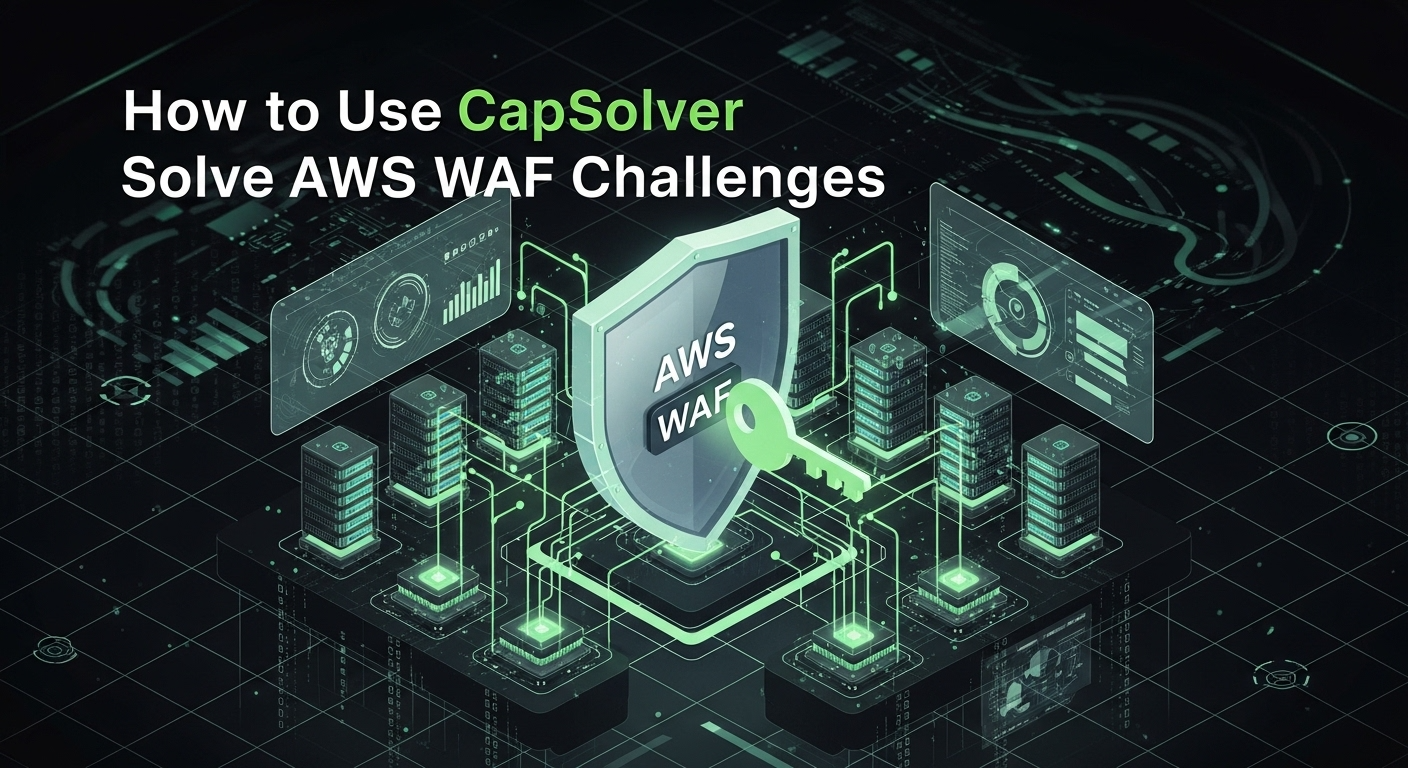
How to Solve AWS WAF Challenges with CapSolver: The Complete Guide in 2025
Master AWS WAF challenges with CapSolver in 2025. This complete guide offers 10 detailed solutions, code examples, and expert strategies for seamless web scraping and data extraction.

Lucas Mitchell
19-Sep-2025
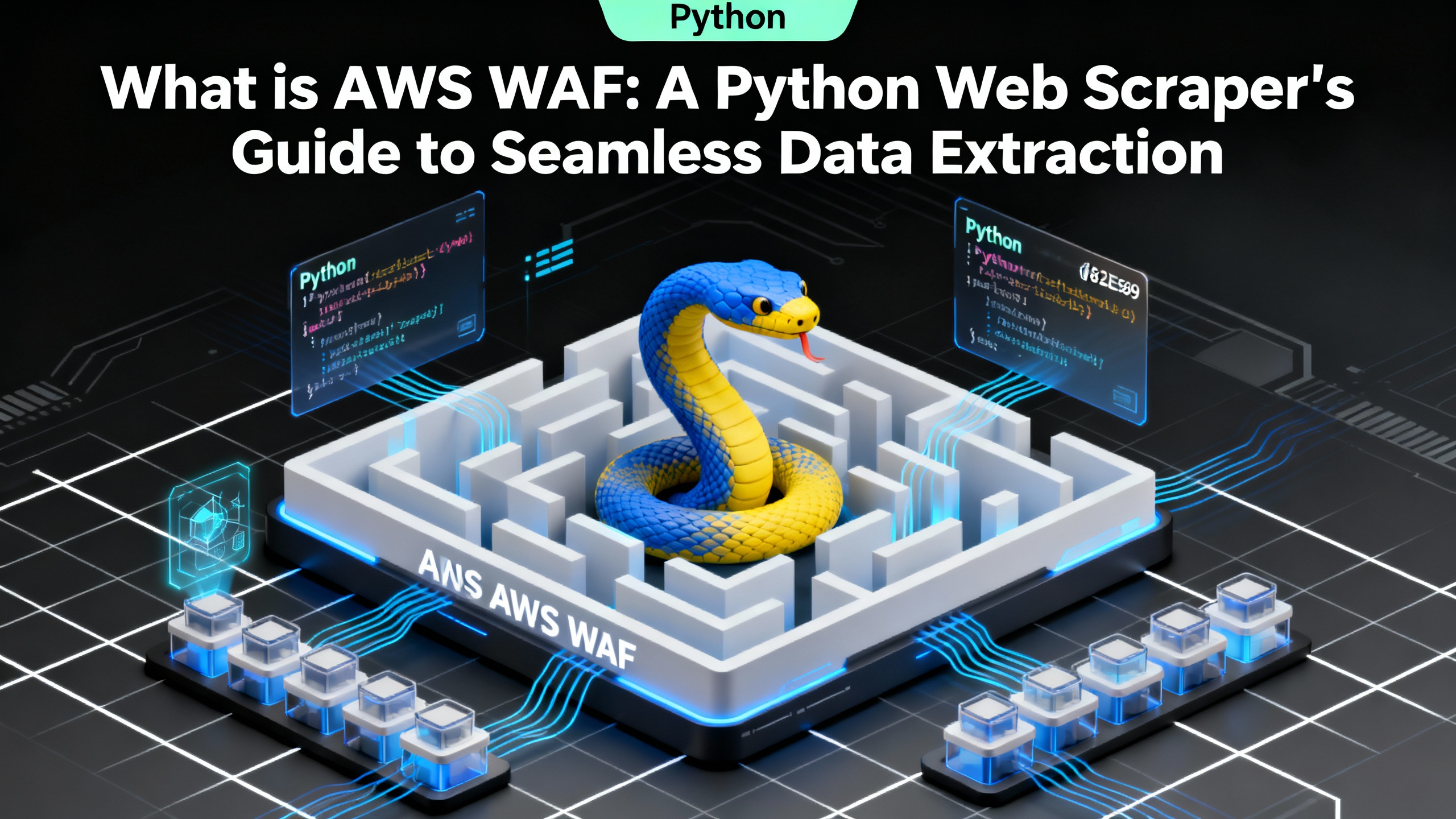
What is AWS WAF: A Python Web Scraper's Guide to Seamless Data Extraction
Learn how to effectively solve AWS WAF challenges in web scraping using Python and CapSolver. This comprehensive guide covers token-based and recognition-based solutions, advanced strategies, and code examples fo easy data extraction.

Lucas Mitchell
19-Sep-2025
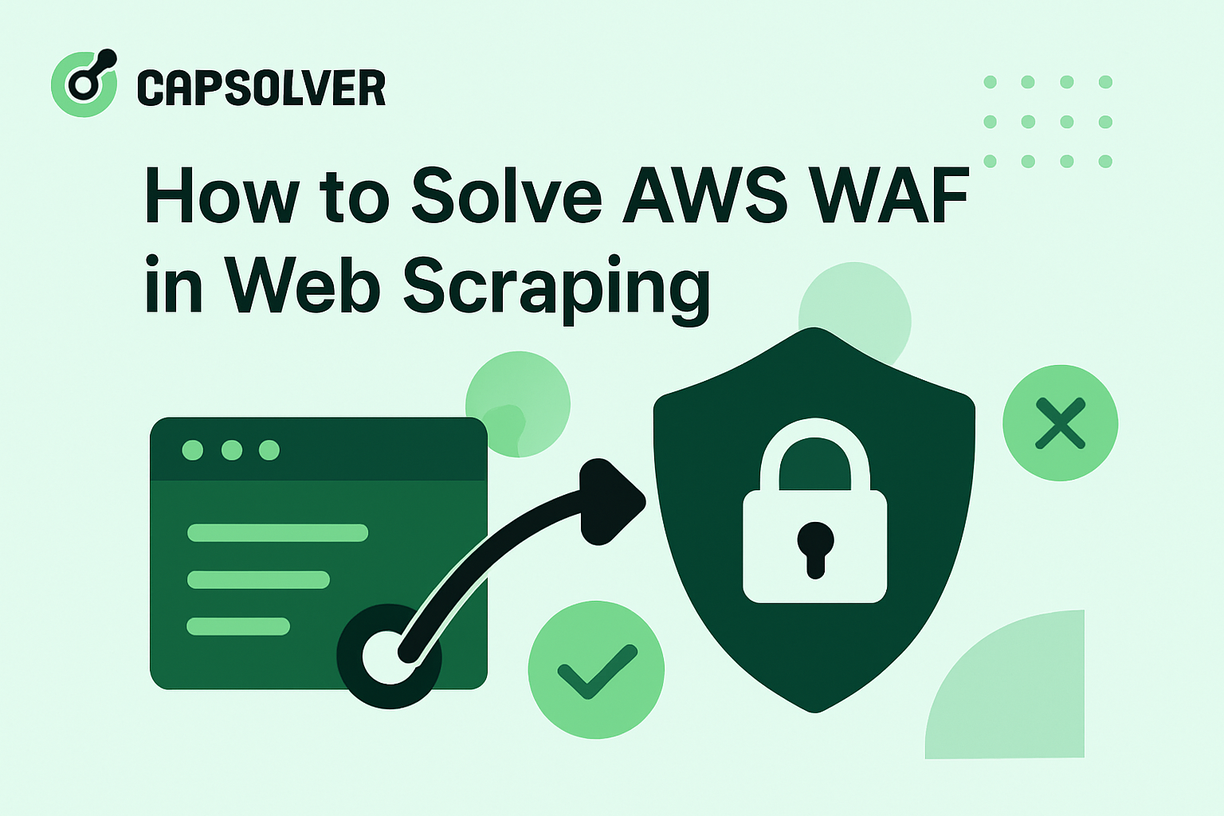
How to Solve AWS WAF Captcha When Web Scraping: A Compenhensive Guide
Solve AWS WAF Captcha in web scraping with CapSolver. Boost efficiency, solve challenges, and keep data flowing seamlessly.

Lucas Mitchell
17-Sep-2025

How to Solve CAPTCHA with Selenium and Node.js when Scraping
If you’re facing continuous CAPTCHA issues in your scraping efforts, consider using some tools and their advanced technology to ensure you have a reliable solution

Lucas Mitchell
15-Oct-2024

Solving 403 Forbidden Errors When Crawling Websites with Python
Learn how to overcome 403 Forbidden errors when crawling websites with Python. This guide covers IP rotation, user-agent spoofing, request throttling, authentication handling, and using headless browsers to bypass access restrictions and continue web scraping successfully.

Sora Fujimoto
01-Aug-2024


